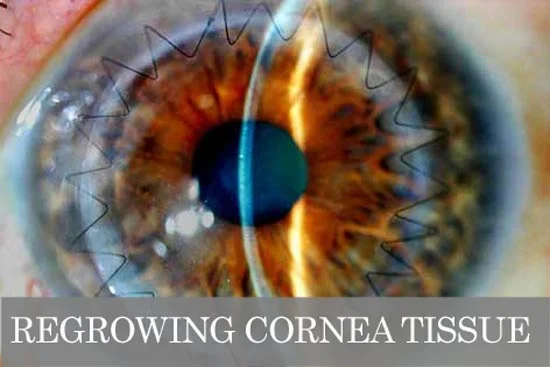
Researchers in Boston USA have identified a new way to enable regrow human corneal tissue to help restore vision in the early trials. The team was led by Dr Paraskevi Kolovou. The key to the new discovery was the ABCB5 molecule that acted like a marker to find limbal cells.
These limbal stem cells can be difficult to find and were previosuly only found in the limbus or “basal limbal epithelium.” Previously, the loss of human limbus is usually attributed to injuries or eye disease. Loss of limbus is currently one of the leading causes of blindness for humans. Previously, tissue regeneration using cell transplants has been done to allow the cornea to regenerate, but previously it was unknown if there were any limbal stem cells present during the grafting stage. Previously, Doctors were not able to count the volume of cells using flow cytometry leading to inconsistent results.
Cornea Grown using Limbal stem cells
Scientists at Harvard Stem Cell Institute were finally able to overcome this limitation by using certain antibodies to detect the elusive ABCB5 molecule to better target the limbal cells in the tissue from human donors. They then used these grafts to properly regrow a fully functional human cornea in mice.
Limbal cells are rare and difficult to isolate and any chances for successful transplants were dependent heavily on these unique cells. This new finding should make it much more feasible to restore corneal surface on humans. The ABCB5 molecule was originally discovered by Doctor Markus and Natasha Frank of the VA Boston Healthcare System. The doctors were able to produce the molecule in tissue precursor cells that are found in human intestine and skin stromal cells.
They also recently found that ABCB5 can also be found in limbal stem cells as this molecule is required for the survival, maintenance and repair of the cornea. Studies have shown that lacking a properly functional ABCB5 molecules in the limbal stem cells and corneas did not heal properly after injury. The ABCB5 gene allows the limbal stem cells to survive by protecting the cells from programmed cell death known as apoptosis.
To learn more or if you have any other questions please contact us today.
Chimeric antigen receptor-T cell treatment (CAR-T cell therapy) holds immense potential to revolutionize organ transplantation, particularly for patients who struggle… Read More
In the ever-evolving landscape of nutrition science, the discourse around dietary fats has undergone significant transformation. The Regeneration Center is… Read More
New research shows that specific types of brain cells become active after brain injuries and exhibit properties similar to those… Read More
Chemokines, critical components in the immune system, are small proteins that facilitate the migration and positioning of immune cells throughout… Read More
Stem cell research examines everything from gene expression to differentiation capacities to therapeutic potentials. With such diverse data types and… Read More
Stem cell therapy has emerged as a revolutionary new treatment approach for neurological and spinal disorders. One up-and-coming method of… Read More